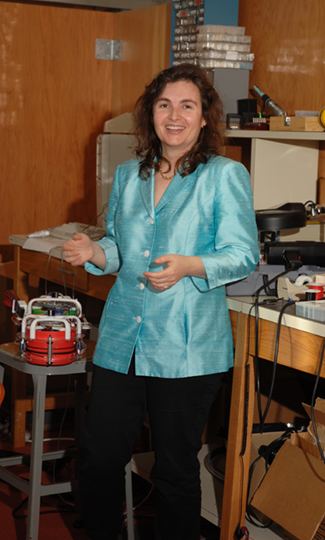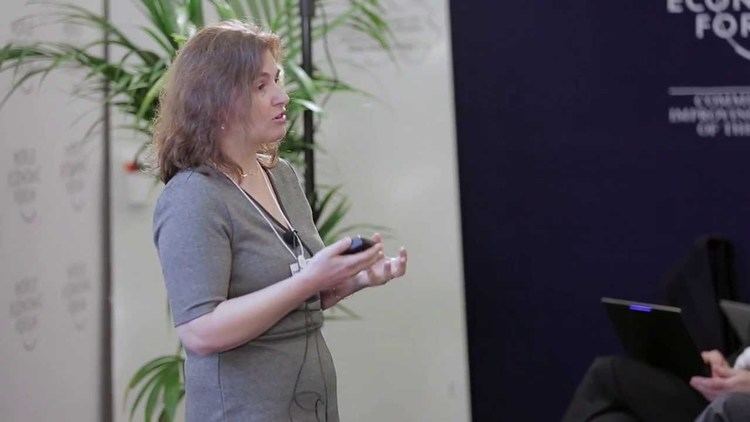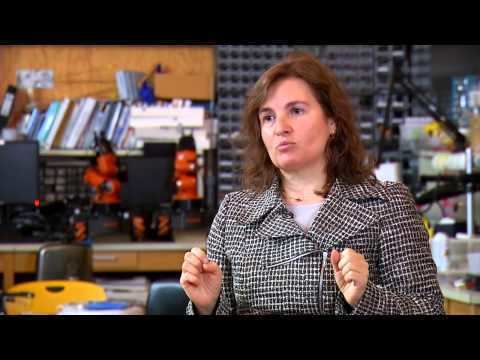Residence American Nationality Romanian American Notable awards ACM Fellow (2014) Role Computer scientist | Citizenship American Name Daniela Rus Awards MacArthur Fellowship | |
 | ||
Fields Robotics, Computer Science | ||
Hub Culture Davos 2019 - Daniela L. Rus, Director of the CSAIL of MIT
Daniela L. Rus (born 1963 in Cluj-Napoca, Romania) is an American computer scientist, and Andrew and Erna Viterbi Professor in the Department of Electrical Engineering and Computer Science (EECS) at the Massachusetts Institute of Technology.
Contents
- Hub Culture Davos 2019 Daniela L Rus Director of the CSAIL of MIT
- Hub Culture Davos 2019 Daniela L Rus Director of the CSAIL of MIT THE FUTURE OF AI
- Biography
- Work
- Networked distributed collaborative robotics
- Development of algorithms
- Distributed Robotics Lab
- References
Hub Culture Davos 2019 - Daniela L. Rus, Director of the CSAIL of MIT - THE FUTURE OF AI
Biography
In 1993 Rus received her Ph.D. at Cornell University under the supervision of John Hopcroft. She started her academic career as an Assistant, Associate, and Full Professor in the Computer Science Department at Dartmouth College before moving to MIT.

At Dartmouth College's Computer Science Department, Rus founded and directed the Dartmouth Robotics Laboratory. She is currently the Director of MIT Computer Science and Artificial Intelligence Laboratory (CSAIL) and head of its Distributed Robotics Lab.

Rus is a member of the National Academy of Engineering NAE, and a fellow of AAAI and IEEE. She was also the recipient of an NSF Career award and an Alfred P. Sloan Foundation fellowship, and was a recipient of the 2002 MacArthur Fellowship.
Work

Rus’ research interests include robotics, mobile computing and programmable matter. She is known for her work on self-reconfiguring robots, shape-shifting machines that have the ability to adapt to different environments by altering their internal geometric structure. They do this on their own, without remote control, for locomotion, manipulation, or sensing purposes. She has shown that these self-reconfigurable machines could be used in many situations where the possible obstacles and constraints on movement could not ever be fully anticipated in preprogrammed control software (e.g., deep sea or planetary exploration).
Networked, distributed, collaborative robotics

Rus's research is focused on developing the science of networked/distributed/collaborative robotics. Simply put, her research answers the question: how can many machines collaborate to achieve a common goal? Distributed networked robot systems consist of multiple robots that are connected by communication. In these systems the robots interact locally with the environment.
The objective is for the system as a whole to have guaranteed global behavior. Distributed robotics is an important area of robotics as it addresses how collections of robots can collaborate to achieve a larger task than each individual robot is capable of doing. Rus was the first to put this area on a firm algorithmic footing.
Development of algorithms
Rus's research addresses the development of algorithms that
- enable collaboration;
- couple tightly communication, control, and perception;
- are scalable and generally independent on the number of units in the system;
- have provable guarantees. An important theme in this work is self-organization: the study of computational processes that interact with each other and with the physical world by means of perception, communication, and change to achieve system reconfiguration in response to the task requirements and the environment.
Distributed Robotics Lab
At MIT CSAIL, Rus heads the Distributed Robotics Lab which conducts research on modular and self-reconfiguring robots, distributed algorithms and systems of self-organizing robots, networks of robots and sensors for first-responders, mobile sensor networks, cooperative underwater robotics, and desktop robotics.
Her lab has created robots that can mimic a variety of human-like actions like tending a garden, dancing, baking cookies from scratch, cutting birthday cakes, among other behaviors. They can also fly in swarms without human aid to perform surveillance functions. She has led numerous groundbreaking research projects in the areas of multi-robot systems and in applications to transportation, security, environmental modeling and monitoring, underwater exploration, and agriculture.
